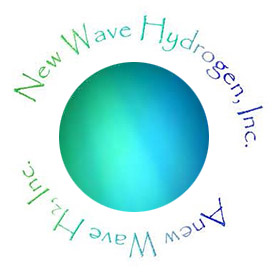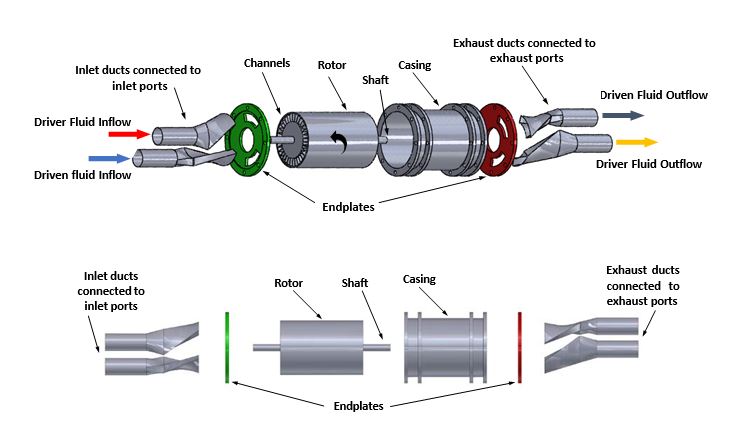Proceedings of the ASME 2021 International Mechanical Engineering Congress and Exposition
| Pejman Akbari
California State Polytechnic University Pomona, California pejmanakbari@cpp.edu |
Colin D. Copeland Simon Fraser University Vancouver, Canada colin_copeland@sfu.ca | Stefan Tüchler University of Bath Bath, United Kingdom |
|
Mark Davidson New Wave Hydrogen, Inc. Gainesville, Florida mark@thetechtoybox.org |
Seyyed V. Mahmoodi-Jezeh Simon Fraser University Vancouver, Canada |
ABSTRACT
This study introduces a new method of methane pyrolysis in a rotary chemical reactor using wave rotor technology. The patented technology has been developed by New Wave Hydrogen, Inc. (New Wave H2 or NWH2) . The concept introduces an efficient method of hydrogen production driven by shock wave gasdyanmics, with no direct CO2 emissions and no water use. The New Wave Reformer is based on wave rotor designs where unsteady shock waves are generated within channels arrayed around a rotating drum. As in a typical wave rotor wave cycle, a sharp pressure increase occurs behind a reflected shock wave, resulting in a proportional increase in gas temperature. This temperature amplification can be used to initiate a thermal decomposition reaction in gaseous constituents. Past studies have proven that a wave reformer with onboard reactions can reform heavy hydrocarbon gases into lighter hydrocarbon products. The current NWH2 study explores how a wave rotor can employ pressurized natural gas as a driver gas for compression heating of a low-pressure hydrocarbon fuel inside the channels of a wave reformer, resulting in the decomposition of methane into hydrogen and carbon black. This study first reviews past efforts ranging from conceptual patents to experimental studies utilizing different wave cycles for rapid heating of gases in gas-phase chemical reactions. Examples of such reactions include the formation of acetylene from methane and the formation of nitric oxide from air. In ongoing research, the authors introduce a wave cycle that uses a dual-stage gas
compression process designed to prolong reaction time within the channels, addressing a key factor in high methane-to-hydrogen conversion. The process has been modeled numerically using a customized version of the Tüchler-Copeland experimentally-validated quasi-one-dimensional CFD code. The computational results provide data used in the prediction of flow fields inside the channels and at the inflow/outflow ports of the reactor.
Keywords: wave reformer, wave rotor, methane pyrolysis, shock heating, wave chemical reactor, hydrogen.

